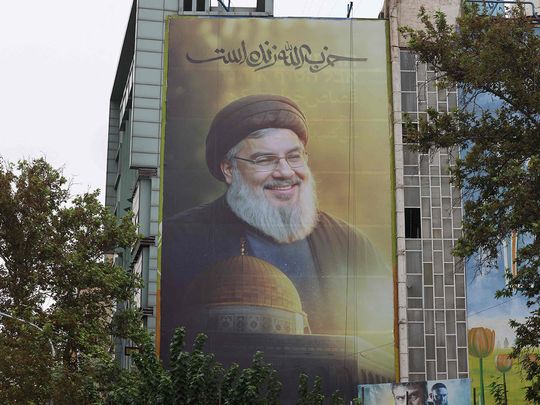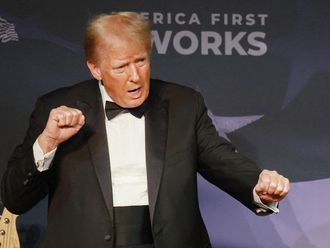
The assassination of Hassan Nasrallah in Beirut on 27 September 2024 has created havoc in Hezbollah, although many had seen it coming including — not surprisingly — Nasrallah himself. Since the 2006 war with Israel, he began taking strict measures regarding his personal security, abandoning mass rallies and restricting his meetings to a very close circle of people, always at well-guarded and secret Hezbollah premises and never at public venues.
He also ceased to speak among crowds, which was always one of his strengths, addressing followers since then through televised records.
The most visible indicator that Nasrallah was next on Israel’s hit list was the killing of his Hamas counterpart Ismail Haneyah in Tehran last July and on the very same day, the assassination of his trusted confident and top commander Fouad Shukr in Beirut, a stone’s throw from where Nasrallah was killed.
Ten terrible days
The past ten days have been terrible for Hezbollah, starting with the “pager explosions” that rocked Lebanon on 17 September, followed by rigging of walkie-talkies on the very next day, injuring thousands of and severing communication within the ranks of the party.
Then came the targeted attack on twenty members of Hezbollah’s elite Radwan Force on 20 September, leading up to the death of Nasrallah himself.
It’s the end of an era for Hezbollah but it’s too soon to write-off the party entirely given the probability of a rebound, with support from Iran. Nobody knows exactly how much of its arsenal was destroyed since mid-September, and how much remains stored in Hezbollah’s secret underground.
When Nasrallah’s predecessor Abbas Al Musawi was killed on 16 February 1992, the Israeli press mistakenly reported that the Hezbollah threat had been “eliminated,” which proved entirely wrong.
Who will succeed Nasrallah?
Nasrallah proved to be an exceptional leader, first for the 2000 liberation of South Lebanon and then again, during the 2006 war with Israel.
In that conflict, Israeli premier Ehud Olmert had promised to annihilate Hezbollah and bomb Lebanon back to the Stone Age over the kidnapping of two Israeli soldiers, whom he promised to retrieve to their families. Olmert failed on all three accounts, which was universally regarded as a victory for Hezbollah.
Much of Hezbollah’s future rests on who will succeed him, with two names currently making the rounds, his long-serving deputy Naim Qassem, and maternal cousin and lookalike, Hashem Safiddine.
Qassem lacks religious credentials and military background, although he will lead the transition period until a new secretary-general is chosen by Hezbollah’s 7-man Shura Council. Safiddine is posed to fill the post within the upcoming days.
Who is Hashem Safiddine?
Two years younger than Nasrallah, Safiddine was born in 1964 in the Dier Qanoon El Nahr town, near Tyre. He hails from an upper-middle class Shiite family that boasted of a handful of MPs in the 1960s. Nasrallah came from a far less prominent working class family; his father being a vegetable vendor.
Rather than studying in the Iraqi city of Najaf, where all previous Hezbollah-secretary generals received their religious education, Safiddine studied in Qom, Iraq.
Some are pointing to that detail as an indicator that Safiddine is ideologically closer to Persian culture and religious interpretation of Shiite Islam.
That is historically incorrect, because Safiddine was poised to study in Najaf like the first three leaders of Hezbollah (Subhi Tufayli, Abbas Al Musawi, and Nasrallah) but by the time he was ready to enrol, the Iran-Iraq War had broken out in 1980, resulting in a very unfriendly and volatile environment towards Arab Shiites wanting to study in Iraq.
Social, political, and educational affairs
Fearing their connections to Iran, Saddam Hussein persecuted both them and their teachers, prompting Safiddine to go to Qum rather than Najaf. He was twenty when Hezbollah was formed in 1984 and during frequent summer visits to Lebanon, joined the party as a young cadet, probably never imagining that he would one day rise to its helm.
Safiddine would remain in Najaf until 1994, when two years after becoming party leader, Nasrallah summoned him back to Lebanon to serve in Hezbollah’s top positions. One year later, he was elected into the Shura Council — a post he still holds today — and eventually into the 9-man Consultative Council, in addition to chairing the Jihad Council.
In 2001 he was appointed chairman of the party’s Executive Council, or what some refer to as the “Hezbollah government,” handling the social, political, and educational affairs.
Nine years later he was named military commander of the Southern Front in November 2010. For thirty years he lived in Nasrallah’s shadow, very willingly, and only recently began to be seen on television and in the press.
The Final Word
The final say in Safiddine’s appointment will be for the Supreme Leader of Iran, Ali Khamenai. He was the one who endorsed Nasrallah’s rise in 1994, although other figures were older and more experienced within the party apparatus. Safiddine is extremely well-connected in Tehran, where his brother Abdullah serves as Hezbollah’s permanent representative to Iran.
He is reportedly more hardline than Nasrallah, who often resorted to pragmatism in Lebanese domestics. In 2020, his son Rida married Zeinab Soleimani, the daughter of Qassem Soleimani, senior Iranian general who was killed in an American strike in Baghdad that January. Safiddine’s wife is the daughter of Mohammad Ali Al Amin, a prominent Lebanese cleric who served on the Sharia Committee of the Higher Islamic Shiite Council of Lebanon.
As all eyes are now trained on Safiddine, a post has making the rounds on social media networks for Hezbollah members, triggered by Nasrallah’s daughter Zainab.
Hours after her father’s death she posted a friendly picture of him with the words: “If one Sayyed dies, another Sayyed will rise.” Others have been repeating the post, with Hashem Safiddine’s picture replacing that of Hassan Nasrallah.
— Sami Moubayed is a historian and former Carnegie scholar. He is also author of the best-seller Under the Black Flag: At the frontier of the New Jihad.









